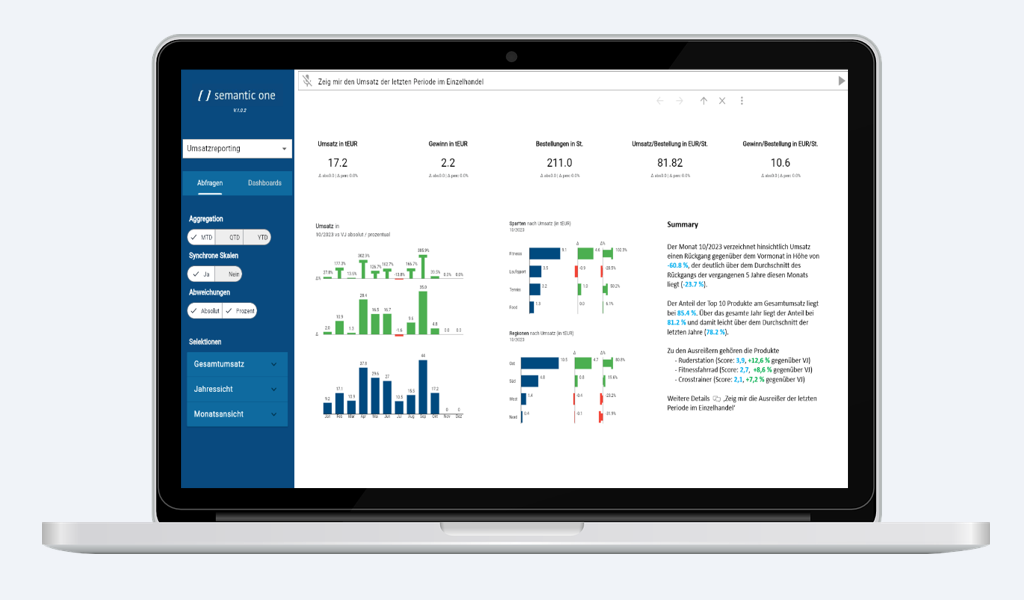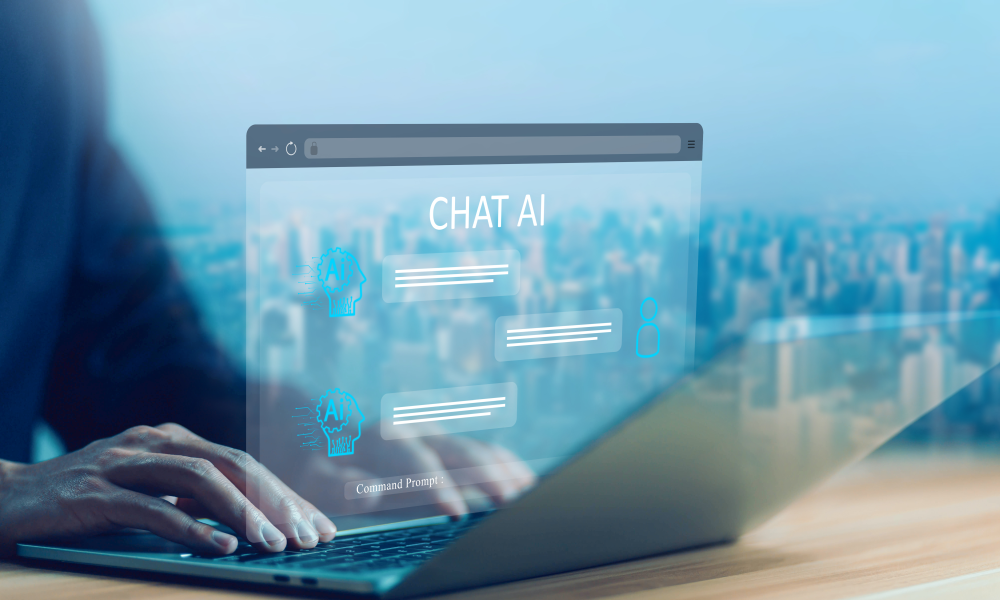Business reporting with everyday language
Analyze data quickly and intuitively – simply by natural language input. Our generative AI generates complete reports and makes business intelligence available to everyone.
Radically simplify reporting
We reduce manual work from hours to seconds

Autogenerated Dashboards
Our AI creates complete analyzes & dashboards, tailored to every question.

Augmented Analytics

Insights & Summaries
Auto-generated insights for any query are summarized in summaries.
Next Generation BI

We analyze our sales data with the language assistant from semantic one. The speed at which we gain transparency about our data without training and without prior knowledge is impressive
Tim Klauke
CEO

The advantage of semantic one is that entire work processes can be automated, which with the previously known way of working could only be carried out through many manual individual steps and a lot of time.
Christian Schmidt
Leader Controlling
What we do
